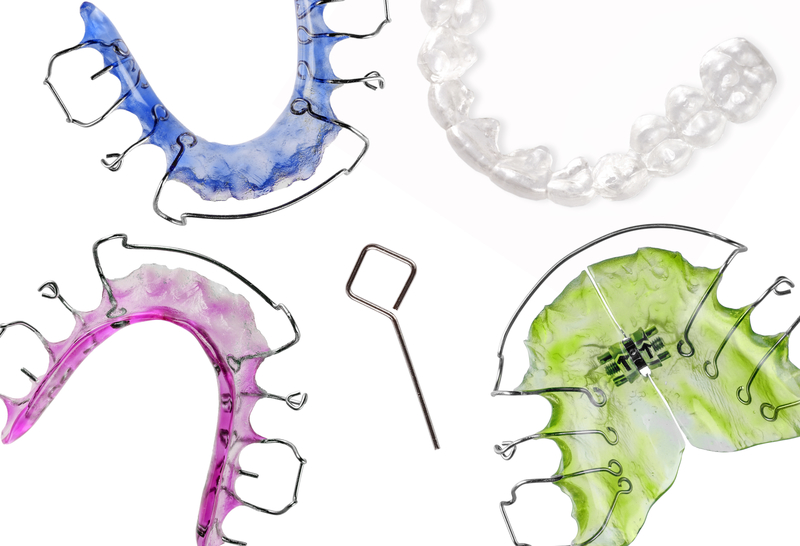Building Strong Teeth for Life

Many people take vitamins, exercise and eat right to maintain a healthy body. However, what about your teeth? They need tender loving care to stay healthy and strong as well. Most people either don’t realize how much care they need to give their teeth, or they forget because of busy schedules. However, building strong teeth for life only takes a few minutes of your day to achieve. Your teeth need daily brushing, flossing and other care to keep them free of damaging substances. You also need dental appointments, oral cancer screenings, a healthy diet and more to avoid tooth loss and oral health problems. Follow these simple guidelines to keep your smile healthy for life!
How Strong Are Teeth?
Many people simply assume that the teeth are bones, but they actually are not. Your bones and your teeth are some of the hardest tissues in your body and are made of calcium and phosphate. However, your teeth are actually harder. Bones have spongy insides, but teeth are 96% hard mineral. That’s why you can exert up to 200 pounds of pressure when you chew according to the ADA. However, no matter how strong teeth are, they can’t repair themselves when they become damaged.
What Weakens Teeth
Your teeth are some of the strongest parts of your body, but even the strongest materials can become weak over time. Generally, poor oral hygiene habits are what weaken your teeth the most. Genetics can give some patients weak enamel, but 99% of the time the problem is your hygiene. Tooth decay is so common among American children and adults, that the National Institutes of Health consider it to be the most “prevalent chronic disease” around. You get this disease by simply not brushing and flossing enough. Sugar plus saliva makes plaque, and that plaque sticks to your teeth and decays them. People who don’t brush or floss their teeth can expect to have problems with tooth decay, bad breath, gum disease, tooth loss and more. Bottom line: brush your teeth and do it every day!

Building Strong Teeth Through Nutrition
Too often, the American diet consists of quick foods that generally are low in nutrition and high in sugar. If you look at the labels of most of these foods, you will find that ½ or more of many pre-packaged snacks are pure sugar. Even “healthy” or diet foods can be terrible for both your body and your teeth because of that sugar factor. Foods that have an unexpectedly high amount of sugar include:
- Yogurt
- Breads (rolls, pastries, doughnuts, sandwich bread, etc.)
- Cereal (including oatmeal)
- Drinks
- Protein bars
- Pancakes and similar breakfast items
- Many dressings and sauces
- Fruit snacks or dried fruit
A person can drink 3 candy bars’ worth of sugar in a single soda without realizing it. That’s why it’s always important to check labels and choose foods free of sugar or very low in sugar. Not only with that sugar rot your teeth, but it will cause you health problems.
Instead of sugary foods, choose nutritious foods such as:
- Low or zero sugar yogurt. These are high in calcium.
- Dairy products such as cheese and milk. Dairy contains high amounts of calcium, proteins and other minerals for building strong teeth.
- Water. Sports drinks, sodas and juices are full of sugar.
- Crunchy, high-fiber foods. Celery, carrots, and apples are some of these foods that can help scrape particles off your teeth as you eat them.
- Leafy greens. These are full of so many vitamins that they can significantly help your oral health and overall wellness.
Also avoid tobacco use, as tobacco quickly damages teeth and causes oral cancer.

Essential Oral Hygiene Habits
You need to eat well to have strong teeth, but you also need to be cleaning your teeth meticulously. Every person must brush and floss their teeth or they will get tooth decay. It’s inevitable without those basic oral hygiene habits. The American Dental Association recommends brushing the teeth at least twice a day to keep them free of plaque. If you brush your teeth after every meal and teach children to do the same, the risk of tooth decay goes down even more. Adding fluoride to your hygiene routine makes teeth stronger, as this mineral provides a shield for your tooth enamel against sugars, acids and other harmful substances. When choosing toothpastes, mouthwashes and more, look for products with fluoride in them.
Flossing is often overlooked by many people, but it too is essential to keeping your teeth strong, especially with braces. Food and drink pass through your teeth everyday. When you chew, food is lodged in cracks with every bite. You can clean your teeth front and back, but don’t forget about the spaces in between. Flossing dislodges food that would otherwise decay and weaken tooth enamel. If patients floss all the way up in their gum line on both sides of each individual tooth, they remove hidden plaque that causes gum problems. Using floss to scrape down the teeth as you go is a great way to remove anything that coats the tooth surface. If you don’t do anything else, make sure you and your children at least follow these basic oral hygiene habits. To learn about more oral hygiene habits you need (like visiting the dentist), call Belmar Orthodontics today at (303) 225-9016!
A Straight Smile for Life with Retainers

Most patients spend 18-24 months with their orthodontic appliances. That’s about 78-104 weeks of your life with braces, and time that you don’t want to have wasted. The worst thing that can happen after getting your braces off is that your teeth go crooked once more. This can happen within the first month if you’re not careful. Luckily, dentists know this and we provide our patients with either removable retainers or permanent ones. See why retainers are so important for maintaining a straight smile for life and why you need one!
Finishing Up with Braces
If you have gotten to the point in your orthodontic treatment that you need a retainer, congratulations! It has taken you 18-24 months to get that beautiful, straight smile you’ve wanted. No matter if you had lingual, ceramic, or metal braces, or if you opted for Invisalign treatment, you will still need an orthodontic appliance to keep your teeth straight. This isn’t something you want to wait on either, as studies show that your teeth start shifting back to their crooked state within the first month of getting braces off.
When our patients end their time with braces, we immediately prep them for either a removable or a permanent retainer. There are pros and cons to each of these types of retainers, but the bottom line is, you need one! A retainer is exactly what it sounds like; it “retains” your straight smile. When you wear it (usually at night), your smile won’t shift or become crooked. We take an impression of your teeth as soon as your braces come off, which we then send to our lab. You will have a retainer custom-made to fit your newly-straightened teeth that will keep them in that position for decades to come.

Retainers 101
You may need both a bottom retainer and a top one, or you might just need one. Some dentists only require a bottom retainer, as the bottom teeth tend to keep the top teeth in place. It all depends on the patient. As we mentioned, there are two types of retainers: removable and permanent.
- Removable – These are the classic retainer pieces that most people think of when they think “retainer”. When we make impressions of your teeth, we go back and use those impressions to make retainer pieces for your top and bottom jaw. Once they are done, you will come into the office and try out your new retainers. Wear them every day during the night and clean them when you take them out in the morning. Only use cleaning products that are safe for mouth retainers and never use hot water when cleaning.
- Permanent – This is also a “fixed” retainer because it is bonded to your teeth and set in place. Much like your braces (if you chose ceramic, lingual or traditional metal), we will bond metal parts to your teeth. However, these metal parts will be placed on the back of your teeth instead of the front. You can choose to have a metal bar that goes across the back teeth or you can choose small metal wires that will bond each individual tooth to the one next to it. If you choose the second, you will have the bottom 6 teeth connected, with bonding cement on each of the backs of those 6 teeth. However, the metal and bonding is small, so it won’t take up very much room in your mouth. You may not even notice it! Both the bar and series of small wires work to keep your bottom teeth in place, which will keep your top in place.
Which One Is Right for You?
Our patients can choose if they want to have a removable or permanent retainer. One might not be right for a patient depending on age and daily habits. If you often lose things (such as car keys or your phone), then you might want to choose a permanent retainer. These stay in place 100% of the time and because of that, you can never lose them. Plus, they retain your teeth around the clock, instead of only at night (like a removable retainer). Permanent retainers also aren’t visible like removable retainers are because they are attached behind your teeth.
A removable retainer will have visible bars that others will be able to see in your mouth when you show your teeth. This generally isn’t a problem, as most people wear theirs at night. If you already struggle with brushing and flossing your teeth, you might opt for a removable retainer, as flossing can be more difficult with a permanent retainer. However, both options are great for all our patients. You simply have to choose which one fits you best.

Healthy Life, Healthy Mouth
We would love every single one of our patients to have a straight smile many decades from now. If you wear your retainer like you should, or continually renew your permanent ones, you can count on keeping that straight smile. However, you also want to keep your smile healthy and free of disease throughout all those decades. After all, there is no point in striving for a straight smile if you don’t have any teeth!
No matter if you are 9 or 90, you have to keep up on proper oral hygiene practices if you want to have a healthy, beautiful smile. Brush and floss your teeth every single day, making sure to brush multiple times a day. Eat nutritious foods and cut down on the sugar to reduce your risk for tooth decay and gum disease. Also, clean your retainer every day so that it stays strong and durable for many years. If you need a new retainer, or are interested in a permanent retainer option, call Belmar Orthodontics today at (303) 225-9016!

